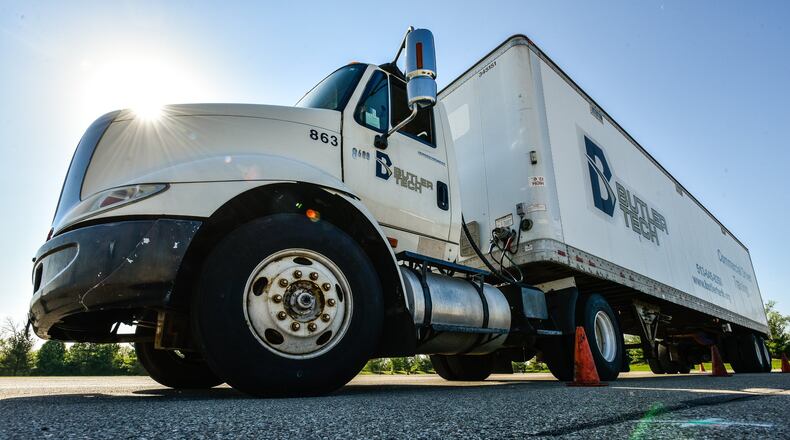”It is at crisis level,” Balzer said. “Walking into the local retailer and having a shelf full of product is in jeopardy.”
MORE: U.S. jobless rate is lowest since 2000
The trucking industry and the economy are “inextricably linked,” with trucking being the primary U.S. mover of freight by tonnage and by value, according to Sean McNally, spokesman for American Trucking Associations.
Approximately 71 percent of all freight tonnage in the country is moved by truck, which equates to more than 10 billion tons each year, McNally said.
“Those numbers are only projected to go up as the economy grows, the population grows, we buy more stuff,” he said. “There’s no Target or Walmart or Kroger or Wegmans or mall in America that has a rail spur pulling up in the back. Consumer goods are almost exclusively delivered by truck.”
The industry needs to add almost 1 million new drivers by 2024 to keep up with demand, according to a recent ATA report. With the continued rapid growth of e-commerce, including 2-day shipping, the trucking industry will find itself with even more deliveries to make and an even wider variety of types of delivery to make, Balzer said.
MORE: If you got a telemarketing call from Dish Network, you may be able to get $1,200
“You’re going to see some pretty difficult times coming when it comes to being able to deliver all of the freight necessary to keep this economy going,” Balzer said. “There is ample opportunity, and it’s not just large trucks, it’s smaller trucks and smaller fleet delivery vehicles that are in need.”
Having the shortage grow to the 210,000 mark would turn the current crisis into a full-blown economic emergency, he said.
But the challenge for trucking companies has been replacing the increasing number of older drivers retiring after holding on to their jobs during the recession. That’s because younger potential workers have stayed away from the trade. Add to that frustrating dynamic the fact that increased demand in the industry due to an improving economy has led to freight shortages and “the need for drivers just continues to grow,” Balzer said.
As that need grows, truck drivers’ salaries continue to increase. Median pay for a truckload driver rose by $7,000 to more than $53,000, according to a 2017 ATA study.
“That’s not an insignificant number and those costs ultimately get borne by people paying for freight service, which is to say manufacturers and retailers,” McNally said. “Those costs ultimately get passed on to supply-chain consumers.
MORE: Franklin packaging company hiring
Compounding the matter is that trucking is an older-than-average industry. The median age for a trucker is 49, whereas the median age for the average American worker is 42, he said.
Recently proposed federal legislation — the DRIVE-Safe Act — is designed to create a graduated license apprenticeship-style pathway for younger drivers to enter the industry. While an 18 year old can drive a truck, he or she cannot drive that vehicle out of state until the age of 21.
Being able to attract people in the three-year gap where they currently are limited and possibly searching elsewhere for a career is an integral step in filling now-vacant positions in the industry, McNally said.
“In order to meet freight demands, we need to hire 90,000 … new-to-the industry drivers every year for the next 10 years,” he said. “Those folks have to come from somewhere. We think that a graduated licensing apprenticeship-style program would be a way to find some of those 90,000 people.”
BY THE NUMBERS: TRUCK DRIVING
49: average driver age in the for-hire over-the-road truckload industry
51,000: amount of truck drivers now needed
174,000: expected shortage of truck drivers by 2026
90,000: amount of truck drivers needed to be hired each year
898,000: amount of truck drivers needed to be hired in the next decade
49: percentage of new driver hires that will occur as a result of truckers who are retiring
88: percentage of trucking fleets saying they are getting enough applicants, but many who are not qualified
SOURCE: American Trucking Associations’ 2017 Driver Shortage Report
About the Author

